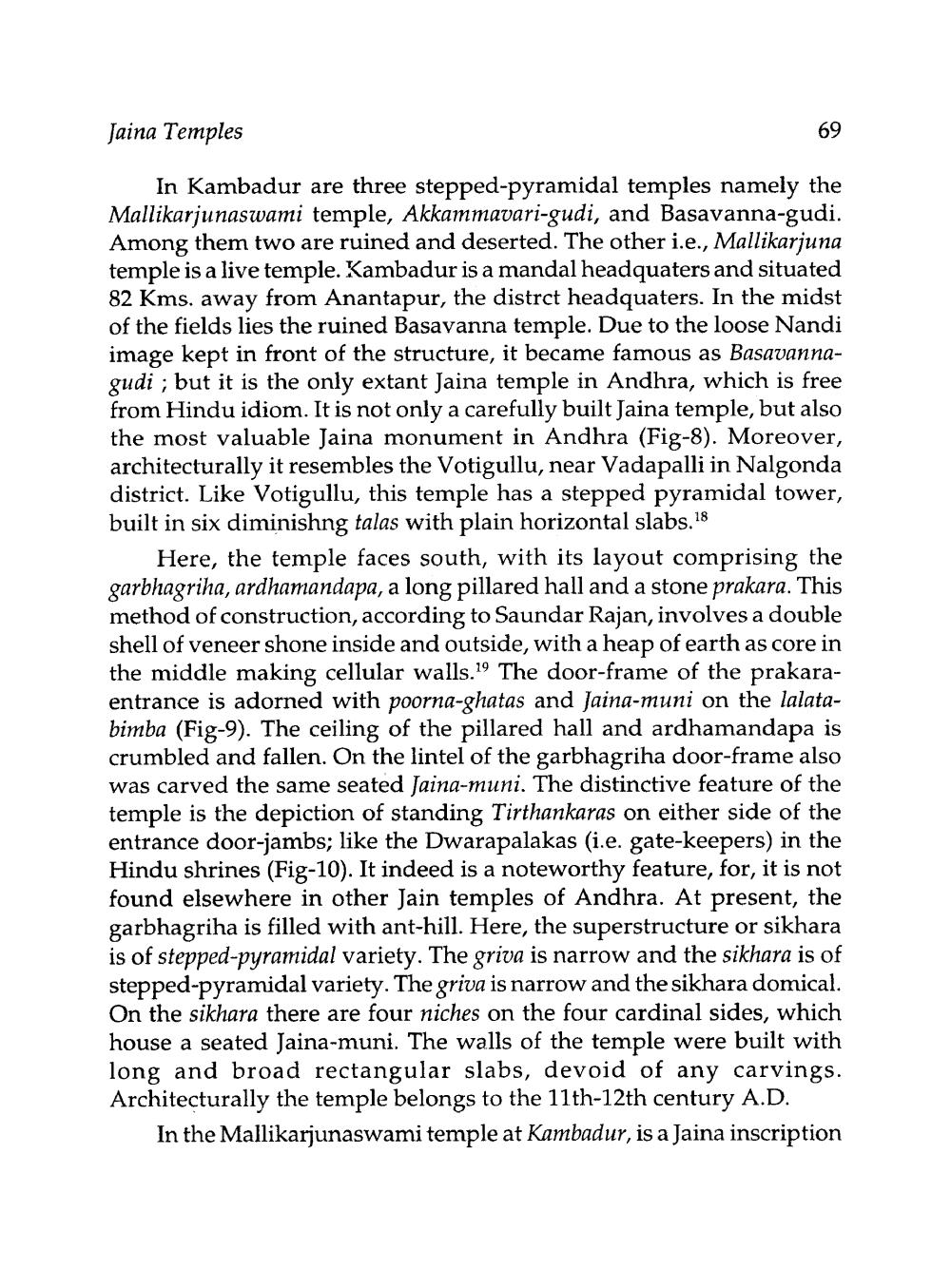________________
Jaina Temples
69
In Kambadur are three stepped-pyramidal temples namely the Mallikarjunaswami temple, Akkammavari-gudi, and Basavanna-gudi. Among them two are ruined and deserted. The other i.e., Mallikarjuna temple is a live temple. Kambadur is a mandal headquaters and situated 82 Kms. away from Anantapur, the distrct headquaters. In the midst of the fields lies the ruined Basavanna temple. Due to the loose Nandi image kept in front of the structure, it became famous as Basavannagudi ; but it is the only extant Jaina temple in Andhra, which is free from Hindu idiom. It is not only a carefully built Jaina temple, but also the most valuable Jaina monument in Andhra (Fig-8). Moreover, architecturally it resembles the Votigullu, near Vadapalli in Nalgonda district. Like Votigullu, this temple has a stepped pyramidal tower, built in six diminishng talas with plain horizontal slabs.18
Here, the temple faces south, with its layout comprising the garbhagriha, ardhamandapa, a long pillared hall and a stone prakara. This method of construction, according to Saundar Rajan, involves a double shell of veneer shone inside and outside, with a heap of earth as core in the middle making cellular walls. 19 The door-frame of the prakaraentrance is adorned with poorna-ghatas and Jaina-muni on the lalatabimba (Fig-9). The ceiling of the pillared hall and ardhamandapa is crumbled and fallen. On the lintel of the garbhagriha door-frame also was carved the same seated Jaina-muni. The distinctive feature of the temple is the depiction of standing Tirthankaras on either side of the entrance door-jambs; like the Dwarapalakas (i.e. gate-keepers) in the Hindu shrines (Fig-10). It indeed is a noteworthy feature, for, it is not found elsewhere in other Jain temples of Andhra. At present, the garbhagriha is filled with ant-hill. Here, the superstructure or sikhara is of stepped-pyramidal variety. The griva is narrow and the sikhara is of stepped-pyramidal variety. The griva is narrow and the sikhara domical. On the sikhara there are four niches on the four cardinal sides, which house a seated Jaina-muni. The walls of the temple were built with long and broad rectangular slabs, devoid of any carvings. Architecturally the temple belongs to the 11th-12th century A.D.
In the Mallikarjunaswami temple at Kambadur, is a Jaina inscription




